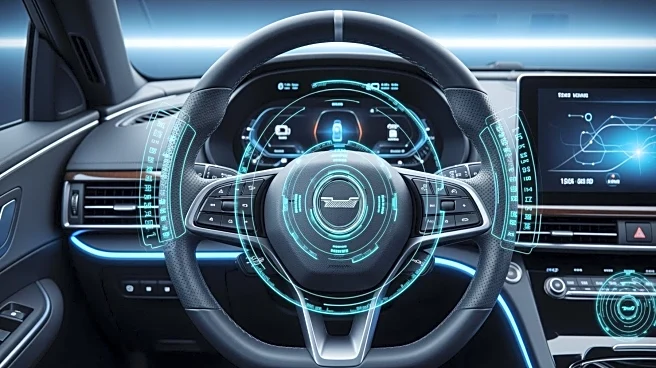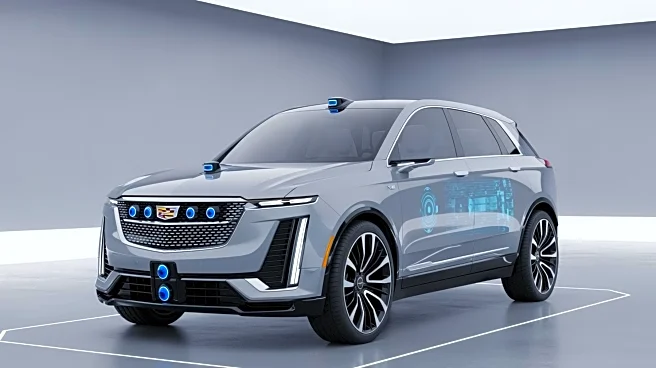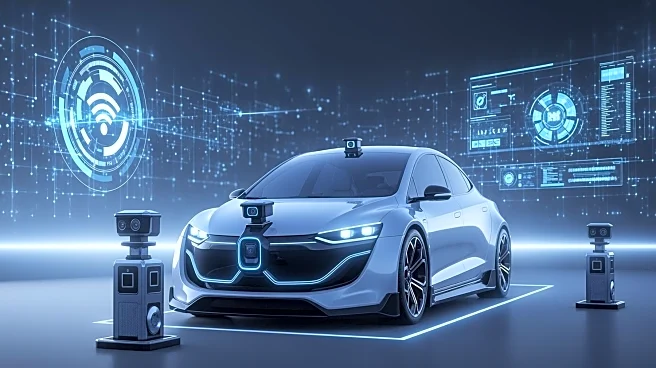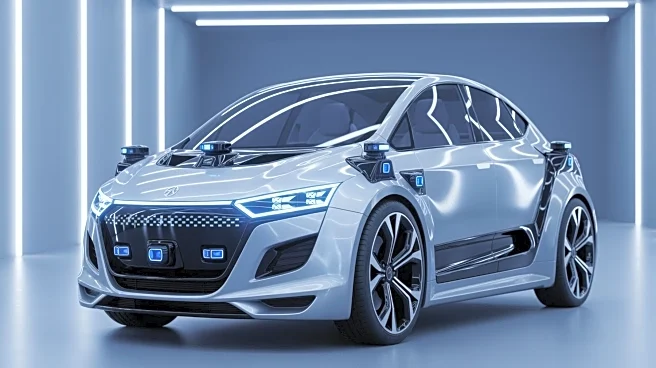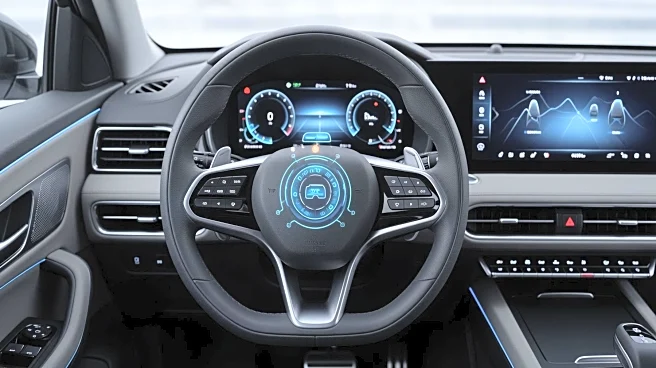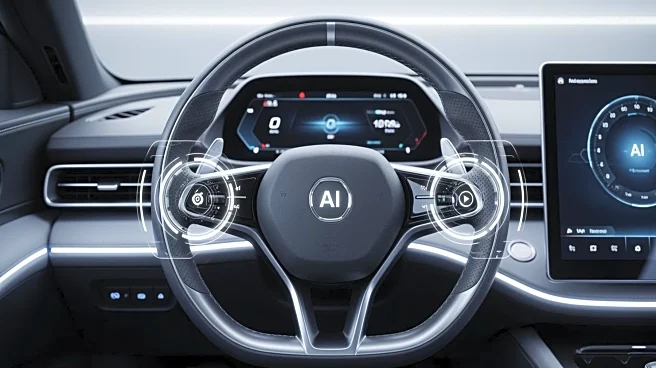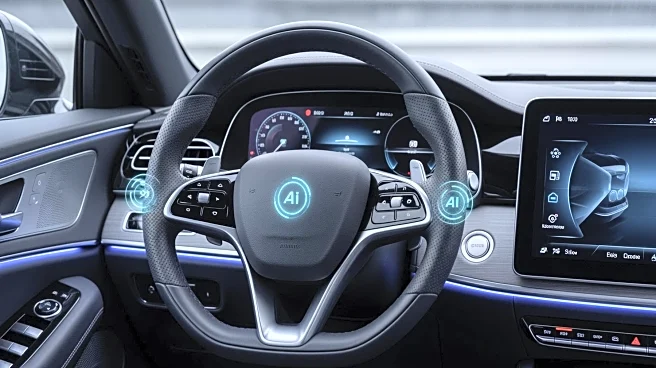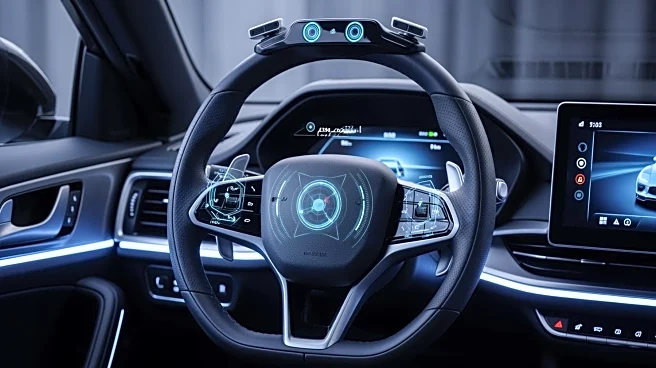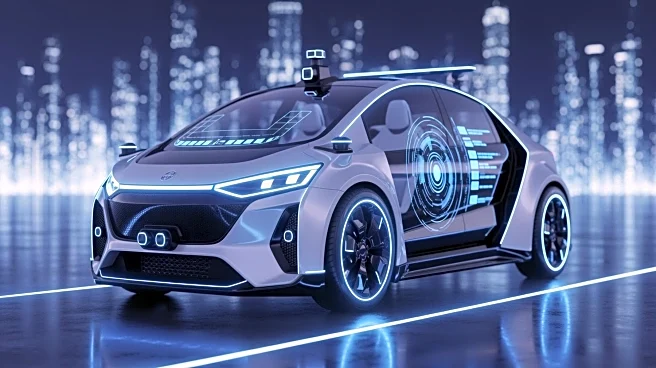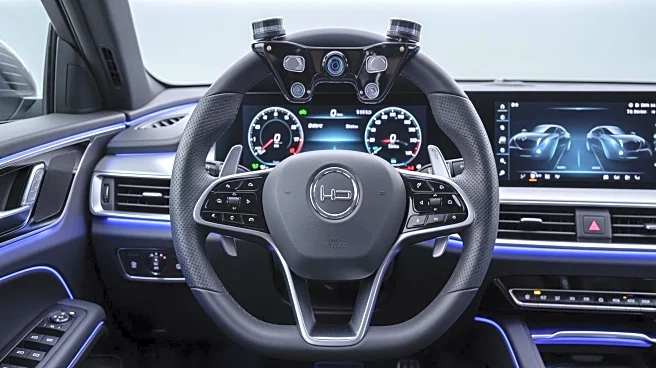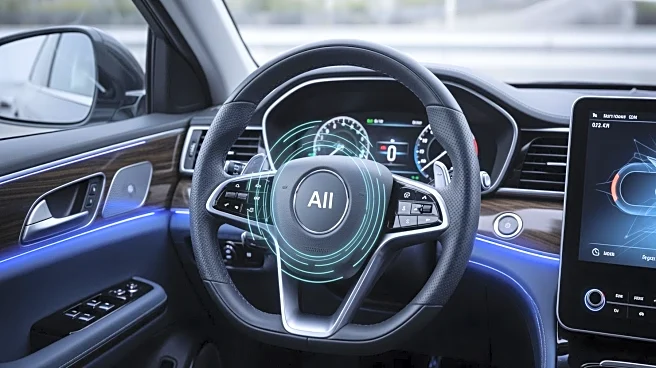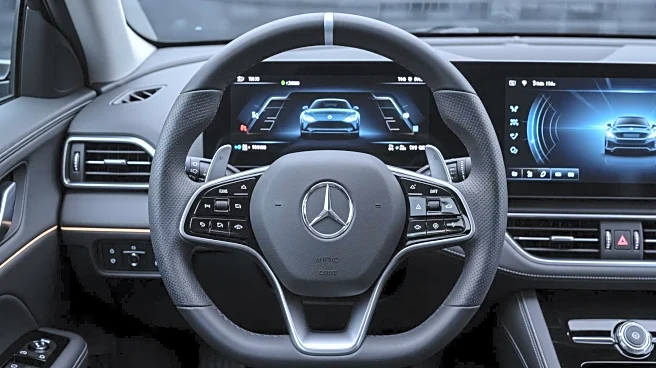What's Happening?
General Motors is advancing its technological capabilities by integrating AI-driven features into its upcoming vehicle lineup. The automaker plans to equip its vehicles with conversational AI powered by Google Gemini starting next year. This technology
will allow drivers to draft messages, plan routes, and find charging stops with contextual assistance. GM is also developing its own custom-built AI, which will be tailored to each vehicle's intelligence and the driver's preferences. Enhancements will be rolled out through software updates to OnStar-equipped vehicles, beginning with model year 2015. Additionally, GM aims to introduce 'eyes-off' driving technology by 2028, debuting on the Cadillac Escalade IQ for highway use. This system will utilize LiDAR, radar, and cameras to provide a high-resolution 3D map of the vehicle's environment, marking a significant step towards personal autonomy in driving.
Why It's Important?
The integration of AI and 'eyes-off' driving technology by General Motors represents a significant shift in the automotive industry towards autonomous driving. This development could enhance driver convenience and safety, potentially reducing human error and accidents. By leveraging AI, GM aims to create vehicles that not only transport but also anticipate and adapt to the driver's needs, improving over time. This move positions GM as a leader in the AI evolution within the automotive sector, potentially influencing other manufacturers to adopt similar technologies. The introduction of these features could also impact consumer expectations and demand for advanced vehicle capabilities, driving innovation and competition in the industry.
What's Next?
General Motors plans to roll out enhancements through software updates starting in 2026, with the full implementation of 'eyes-off' driving technology expected by 2028. The company will continue to develop its custom-built AI platform, which will run on GM's next-generation centralized computing platform debuting in 2028. As these technologies are introduced, GM may face regulatory scrutiny and the need to address privacy concerns related to data collection and usage. The success of these initiatives could lead to further advancements in autonomous driving and AI integration, potentially setting new standards for the automotive industry.
Beyond the Headlines
The introduction of AI-driven features and 'eyes-off' driving technology by GM raises ethical and legal questions regarding the responsibility and liability in case of accidents involving autonomous vehicles. As these technologies become more prevalent, there may be a need for new regulations and standards to ensure safety and privacy. Additionally, the shift towards AI and autonomous driving could have cultural implications, changing the way people perceive and interact with vehicles, and potentially altering the landscape of urban transportation.
